2023 Yamaha Tracer 9 GT and Tracer 9 GT+ First Look

For 2023, Yamaha has gone crazy with the tech on the new Tracer 9 GT+.
For 2023, Yamaha has gone crazy with the new Tracer 9 GT+ and thrown every bit of technology it could think of at the bike. Now sitting atop Yamaha’s sport-touring mountain as the flagship for the brand – taking the place of the dearly departed FJR1300, which has been out of production for a few years – the Tracer 9 GT+, with its multitude of electronic rider aids, will help make the sport-touring experience as stress-free as possible.
The new Tracer 9 GT+ integrates “cutting edge” electronics, says Yamaha, with the two big headliners being Adaptive Cruise Control and the radar-linked Unified Brake System – both of which utilize millimeter wave radar technology as well as an IMU.
Other tech you may be more familiar with seeing on motorcycles include electronic suspension, intelligent riding modes, as well as connected TFT instruments, and (optional) fully integrated Garmin navigation.
Adaptive Cruise Control
Let’s start with the big news first. Yes, by now you probably know about Adaptive Cruise Control (ACC) – the technology that allows you to remain in cruise control and let the bike adjust your speed and distance to the vehicle in front of you. It’s not new, but its inclusion on the GT+ is the first for Yamaha. The ACC system uses integrated millimeter wave radar to detect and measure the distance between you and the vehicle in front and adjusts your speed accordingly.
Says Yamaha:
The ACC is adjustable, and when the machine is in motion its rider can select one of four different following distance options to suit their individual preferences, displayed as one bar for shortest following distance, and four bars for the longest following distance. ACC offers a number of advantages, including reducing rider fatigue by requiring fewer rider inputs, as well as ensuring improved ride quality by maintaining a constant following distance, and also promoting smooth traffic flow.
When the ACC system is active the new 7-inch TFT meter displays a green icon (with grey for standby) and shows between 1 and 4 white bars beneath a car icon to confirm the selected following distance. When the ACC determines that the rider is too close to the vehicle in front or if it senses that the machine’s current acceleration/deceleration status will soon lead to the rider getting too close, the rider intervention request icon appears on the meter to notify the rider that appropriate action is required to avoid following too close.
ACC operates between 30 km/h and 160 km/h – in 1st & 2nd gears from 30 km/h, in 3rd & 4th gears from 40 km/h, and in 5th & 6th gears from 50 km/h. Speed can be increased and decreased in either 1 km/h or 10 km/h increments by pushing once or holding down the adjustment switch. ACC is deactivated by braking or gripping the clutch lever for more than 1 second, or rolling forward the throttle twist grip, beyond the throttle stop.
An interesting feature of the ACC system is the “cornering assist” function that maintains the vehicle’s speed even while cornering and still allows the ACC to work as it should when a vehicle in front slows. Basically, ACC will work as intended even in a corner. That may not sound like a big deal, but remember that the smaller profile of the side of the tire will cause the engine speed to climb slightly, thus making the bike briefly accelerate. If the car in front were to slow down while you’re speeding up, bad things could happen. ACC accounts for this and keeps your speed constant while keeping an eye on the car (or motorcycle) in front of you.
Cooler still, ACC’s “passing assist” feature notices when the car in front is getting close and you turn the indicator on to pass. It will then smoothly accelerate the bike for you so you can complete the pass.
While all of this is going on, ACC is in constant communication with the electronic suspension to adjust damping on the spot to minimize the amount of pitch, either forward or backward, when you the system is braking or accelerating.
Radar-linked front/rear assisted Unified Brake System
While ACC might be a new feature for Yamaha, the Tuning Fork company is claiming its radar-linked Unified Brake System is a first in the industry that can help reduce the chance of a collision, among other things. Here’s Yamaha’s explanation:
The new system is an active design that offers increased controllability by using data from the millimeter wave radar and the 6-axis IMU (Inertial Measurement Unit) to assist and regulate front and rear braking forces, via the Bosch hydraulic unit that optimizes control and bias of the braking system.
There are three main elements to the radar-linked Unified Brake System that operate only when the BC (Brake Control) is turned ON. Firstly, brake assist intervenes when the system detects that a collision is imminent. Secondly, front/rear brake assistance adjusts braking forces to both wheels for stable deceleration. And thirdly, cornering brake control automatically adjusts braking force to inhibit tire slippage when the machine is leaned over.
The radar-linked, Unified Brake System constantly analyses following distance data from the millimeter wave radar. If the system calculates that the rider’s braking inputs are insufficient to prevent a collision with the vehicle ahead it will increase brake pressure to the front and rear wheels to help slow the TRACER 9 GT+.
The previously described ACC system will also automatically slow the TRACER 9 GT+ when a pre-selected following distance is reached, but as soon as the rider applies the brakes the ACC is deactivated – and at this point, the radar-linked Unified Brake System will intervene if it determines that the rider’s braking inputs are not sufficient to prevent a collision.
The system provides additional braking assistance and will only intervene when the BC is turned ON and the rider is braking – it is not a collision avoidance system.
The second element is the front/rear assisted Unified Brake System that adjusts front/rear braking force distribution. When only the front brake is used by the rider the hydraulic unit automatically applies braking force to the rear wheel, with the degree of intervention calculated using IMU data related to changes in acceleration and lean angle. When only the rear brake is used the system will sometimes – but not always – apply additional braking force to the front wheel via the hydraulic unit depending on the brake pedal input and IMU data regarding the bike’s attitude.
The third element is the cornering brake control. This is in effect a ‘cornering brake control’ system that takes into account machine running data from the IMU and instantly adjusts the rider’s braking forces to inhibit tire slippage.
The radar-linked Unified Brake System is linked to the electronic suspension, and as well as assisting and regulating front and rear braking forces it also adjusts front and rear suspension damping to maintain chassis stability. ABS always operates whether the BC is turned ON or OFF.
All of the Tracer 9 GT+’s information is now displayed on a 7-inch TFT display with three different screen options to choose from – there’s a clean, contemporary design, a stripped down design, and the third is inspired by Yamaha’s Jin-Ki Kanno development ideal. Whatever that is…
As is common these days, the Tracer 9 GT+ has smartphone connectivity, but what’s not common is this connectivity on the Tracer then gives you the option to use the Garmin app and tap into full-screen Garmin navigation, right there on your Tracer.
Engine and Transmission
We’re only now talking about the 890cc CP3 three-cylinder engine because it comes back unchanged from last year, which is fine with us since we didn’t have much to complain about it anyway. However, it’s paired with Yamaha’s third-generation quickshifter that’s also integrated with the ACC.
Unlike conventional cruise control systems which disengage when you shift, the third-gen quickshifter on the Tracer doesn’t do that. Instead, the quickshifter now has the ability to downshift when accelerating or upshift when decelerating – all while keeping the cruise control engaged. Why would you want to do that, you ask? Well, say you’re cruising along in sixth gear and the car in front of you abruptly slows down. ACC could struggle to get you back up to speed again. A quick downshift will help the engine get back in its powerband and get you on your way quicker. Conversely, if you’re cruising downhill in, say, third gear, you can click to fourth and ACC can still manage your speed while reducing stress on the engine.
Suspension and Ride Modes
The KYB Actimatic Damper System is back again on the Tracer 9 GT+ and, as mentioned before, this electronic suspension system is in constant communication with the rest of the bike’s systems, sensors (including the IMU), and the different riding modes, to adjust to the road surface in real-time. But that’s not surprising to anyone familiar with electronic suspension.
What might surprise some is the fact that the previous Tracer didn’t integrate its ride modes with the IMU and other rider aids. The engine and ride character acted independently from the other rider aids and electronics. Those days are no more on the 2023 GT+. The Drive mode is now fully integrated with the six-axis IMU and comprehensive suite of rider aids. Says Yamaha:
This new system is more intuitive, being much easier to understand and use on-the-fly. The rider has the option to select one of four integrated riding modes options: ‘Sport’, ‘Street’, ‘Rain’ or ‘Custom’ – all of which now work in conjunction with the engine character selection (D-mode), the traction control, slide control, lift control and electronic suspension’s damping control to ensure enhanced controllability in a wide variety of riding situations.
The ‘Sport’, ‘Street’ and ‘Rain’ selectable options feature embedded factory settings with different intervention levels to suit different conditions, and these pre-set modes have been developed by Yamaha’s designers using feedback from test riders. The fourth ‘Custom’ option enables the rider to manually select their own intervention settings for the various electronically controlled rider aids, and save it as their tailored mode.
Other Odds and Ends
While those are the major changes to the new Tracer 9 GT+, other little tweaks include:
- New ergonomic handlebar switch clusters
- New USB A outlet
- Refined height-adjustable rider’s seat and new seat cover material
- New clear smoke front/rear brake fluid reservoirs
- Dedicated coloring and finishing
- Refined sidecase mounts with damper system
- New 3rd generation quickshifter for seamless acceleration
- Larger diameter rear disc brake
- Revised rear caliper, rear master cylinder, and rear brake pedal
Tracers will be available in dealers in May 2023. Pricing has yet to be announced as of press time.
Become a Motorcycle.com insider. Get the latest motorcycle news first by subscribing to our newsletter here.

Troy's been riding motorcycles and writing about them since 2006, getting his start at Rider Magazine. From there, he moved to Sport Rider Magazine before finally landing at Motorcycle.com in 2011. A lifelong gearhead who didn't fully immerse himself in motorcycles until his teenage years, Troy's interests have always been in technology, performance, and going fast. Naturally, racing was the perfect avenue to combine all three. Troy has been racing nearly as long as he's been riding and has competed at the AMA national level. He's also won multiple club races throughout the country, culminating in a Utah Sport Bike Association championship in 2011. He has been invited as a guest instructor for the Yamaha Champions Riding School, and when he's not out riding, he's either wrenching on bikes or watching MotoGP.
More by Troy Siahaan




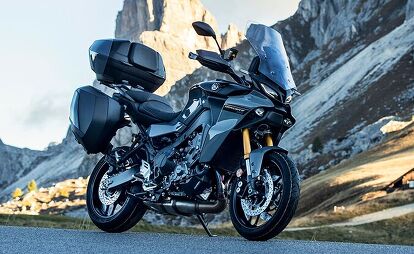





















































































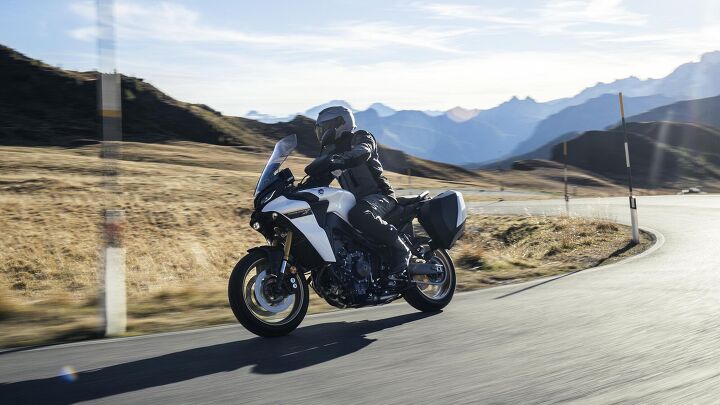


















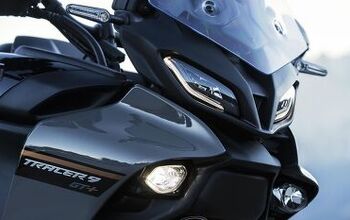
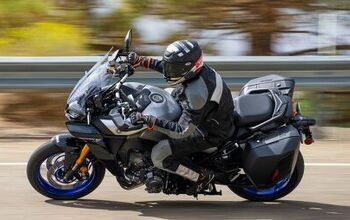
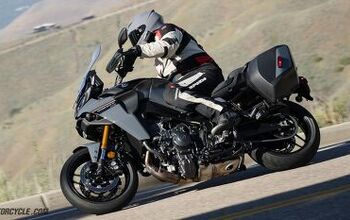
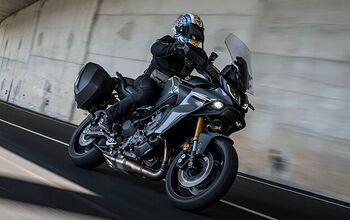










Comments
Join the conversation
I am enjoying my 2022 GT+ I bought for 12,249 in September due to Yamaha's crazy inventory management (That is a decent price for this bike!). But re. the GT+: First, Yamaha has stated earlier this year that they do not plan to introduce the GT+ to the NA markets. We don't even get 2023 T9GTs (new colors) here as they are still selling off the huge pile of 2022 GTs they shipped out between September 2022 and January 2023. Lastly, with a retail price of at least USD 16,999 the GT+ would be completely out of the market for me. I'd step up to a big KTM or similar then. Heck, even the Suzuki GSx S1000 GT+ is more bike for considerably less money. I think Yammi is getting it wrong with their approach to the US market.
Why don’t we get real motorcycle tech like access to the ecu so can control the fueling ourselves. Cruise control has caused more accidents then it has prevented.